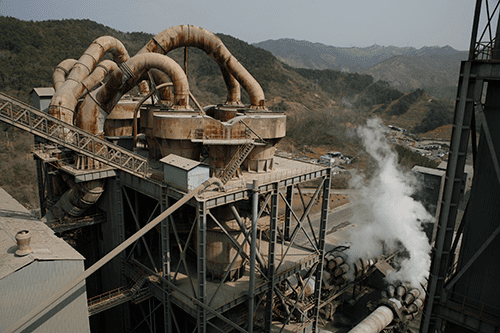
The cement industry, a multi-emission industry that accounts for about 10% of the industrial sector’s GHG emissions, joins the ranks of carbon neutrality.
According to the Ministry of Trade, Industry and Energy on the 17th, seven representative cement companies including Ssangyong Cement, Hanil Hyundai Cement, Asia Cement, Sungshin Cement, Halla Cement, Sampyo Cement, and Decopave will announce the’Common Declaration of Carbon Neutral Challenge’ this afternoon.
The seven companies will also launch the’Cement Green New Deal Committee’, a consultative body for industry, academia, research, and government to promote carbon neutrality in 2050. The event will be attended by representatives of cement companies including Kang Kyung-sung, head of the Industrial Policy Division of the Ministry of Industry, Lee Hyun-jun, president of the Korea Cement Association (CEO of Ssangyong Yanghoe), Kim Jin-man, professor at Gongju University, and Yoo Kwang-soo, president of the Korea Ceramic Institute.
At the event, seven cement companies plan to sign the Joint Declaration of Carbon Neutral Challenge and officially express their willingness to actively participate in carbon neutrality. The declaration includes ▲ efforts to reduce carbon emissions through innovative technology development and conversion of production structure ▲ public-private communication through the Cement Green New Deal and continuing discussions on joint projects ▲ major practical tasks such as discovering and improving government policy tasks and strengthening future industrial competitiveness .
According to the Ministry of Industry, as of 2019, the cement industry’s greenhouse gas emissions amounted to 39 million tons. This is equivalent to 5.6% of the country’s total emissions and 10% of the industrial sector. Carbon dioxide (CO2) emission from the decomposition of limestone, the main raw material, is 23 million tons (57%), emissions from fuel consumption is 12 million tons (30%), and 5 million tons (13%) from electricity use, etc. Appeared.
Accordingly, the seven companies aim to spread the industry’s efforts and consensus to reduce greenhouse gas emissions to the industry, demanding companies and partners. As short-term innovation technology development tasks, it is necessary to expand the use of alternative fuels, use low-carbon raw materials, and improve process efficiency, while low-carbon cement production technology and carbon capture and conversion technology are needed as mid- to long-term tasks.
The industry will continue to discover joint tasks and strengthen mutual cooperation through the Cement Green New Deal. In order to achieve carbon neutrality, the government plans to expand tax credits for facility investment, provide incentives for heat source of waste synthetic resin, and support R&D for environmentally friendly heat sources (hydrogen, etc.).
“Carbon neutrality is a new challenge that is qualitatively different from the contraction of the construction business and the rise of raw material prices such as bituminous coal,” said Lee Hyun-joon, chairman of the Cement Association. “The cement industry requires fundamental changes to address the emissions caused by limestone, the raw material.” did.

He said, “The cement industry’s declaration of carbon neutral participation promises that the cement industry will become a cornerstone for productive and future-oriented progress.”
Kang Kyung-sung, head of the industrial policy department of the Ministry of Industry, said, “We will focus on promoting the ‘5 core carbon-neutral tasks’ to support the transition to carbon-neutrality among the private sector,” he said. “I ask for technological innovation and investment to realize carbon neutrality in the cement industry.” .
Related Articles

Petrochemical is also’carbon neutral’… Hanwha also joined after LG and Lotte

The government establishes a carbon-neutral roadmap in the land transport sector within the year

In order to be carbon-neutral, industry and energy seek’breakthrough innovation technology’

‘2050 Carbon Neutral’ Steel Leads… Green Steel Committee launched
Mr. Kang explained, “We will consider the recommendations for the carbon-neutralization of the cement industry and discuss with the relevant ministries. We will focus on investing in R&D of innovative technologies such as replacement technology for limestone raw materials and improvement of energy process efficiency.”
He added, “We will help reduce the burden of energy and raw materials costs in the cement industry and innovate the cement carbon neutral process through the use of recycled resources and the development of eco-friendly hydrogen-based technology.”
